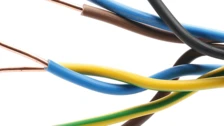
applications
Building Materials
Determination of thermoanalytical and thermophysical properties allows for the comprehensive characterization of building materials.
Knowledge about such aspects as composition, mass loss (due, for example, to binder burnout), thermal expansion, SinteringSintering is a production process for forming a mechanically strong body out of a ceramic or metallic powder. sintering, softening point and Thermal ConductivityThermal conductivity (λ with the unit W/(m•K)) describes the transport of energy – in the form of heat – through a body of mass as the result of a temperature gradient (see fig. 1). According to the second law of thermodynamics, heat always flows in the direction of the lower temperature.thermal conductivity is critical in the development of new materials and helps to ensure that final products can meet the demands being placed upon them.
Simultaneous Thermal Analysis (STA) is ideal for investigating issues such as the Glass Transition TemperatureThe glass transition is one of the most important properties of amorphous and semi-crystalline materials, e.g., inorganic glasses, amorphous metals, polymers, pharmaceuticals and food ingredients, etc., and describes the temperature region where the mechanical properties of the materials change from hard and brittle to more soft, deformable or rubbery.glass transition temperature of modified glass, Phase TransitionsThe term phase transition (or phase change) is most commonly used to describe transitions between the solid, liquid and gaseous states.phase transitions in plasters and mortars, and thermal Decomposition reactionA decomposition reaction is a thermally induced reaction of a chemical compound forming solid and/or gaseous products. decomposition behavior – also with instrumentation for Evolved Gas Analysis (EGA) coupled to the thermal analyzer.
The expansion and shrinkage behavior of building materials, both during production and once in use, can be determined with Dilatometry.
LFA and HFM are versatile methods for the precise determination of Thermal DiffusivityThermal diffusivity (a with the unit mm2/s) is a material-specific property for characterizing unsteady heat conduction. This value describes how quickly a material reacts to a change in temperature.thermal diffusivity and Thermal ConductivityThermal conductivity (λ with the unit W/(m•K)) describes the transport of energy – in the form of heat – through a body of mass as the result of a temperature gradient (see fig. 1). According to the second law of thermodynamics, heat always flows in the direction of the lower temperature.thermal conductivity on samples both small and large.
Refractories can be investigated with an instrument series that is specially tailored to this material group. This series is comprised of the apparatus for determining refractoriness under load (RUL) and creep in compression (CIC), the apparatus for testing hot modulus of rupture (HMOR).
Application Literature






